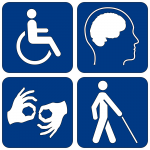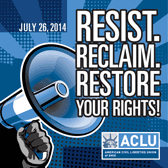News & Commentary
Close the Loophole: Protect Charter Schoolchildren From Restraint and Seclusion
Update - 12/17/2014: Ohio Senate Bill 266 was amended to House Bill 178 and passed unanimously, extending the seclusion and restraint provisions of rule 3301-35-15 to public charter schools.

Shackling: Ohio Juvenile Courts Should Have Rules on Restraints
This is the third in a series of posts on the topic of juvenile shackling. This is Nate P. and I’m writing you this letter to let you know that cuffs and shackles make me feel like a criminal, not a “juvenile delinquent.” Shackles hurt and embarrass me most of the time. My opinion is that they are not necessary. When I wear cuffs and shackles I am judged immediately. I am writing this letter to you so that we can come up with a solution. What if one of your sons or daughters was shackled for a minor, non-violent crime? Think about it, we are kids.

Worse Than Adults: The Shackling of Youth in Juvenile Court
Tim Williamson,’ Detained youth,
Forty-seven years ago, the U.S. Supreme Court’s landmark ruling In re Gault held that young people are entitled to the same procedural rights as adults in court proceedings. However, one right that adults have in Ohio, that young people do not have, is the right to appear in court free of restraints.
Courts have ruled that restraints may only be used on adults who pose a safety risk or who have a documented history of escape. Adults in Ohio and around the country have the right to appear in court without handcuffs, belly chains, or leg irons regardless of the charges they face. Only an adult who has been documented to be a serious safety risk may be shackled, and the court must use due process and evidence to determine this. The use of restraints in adult courts is rare.
Youth in several states in the nation have the right to appear in court unrestrained. However, in Ohio’s juvenile courts, the use of restraints is common.
Due to this inconsistency between Ohio’s adult court and juvenile court, an adult facing multiple serious charges will not wear restraints while a youth facing minor or non-criminal charges will.
This does not seem right, does it?
Research and the U.S. Supreme Court have found that minors are less culpable and more amenable to rehabilitation than adults.
So why are we treating them more harshly than adults?
We must treat our youth as well—or better—than we do adults in the justice system. It’s time to unshackle Ohio’s youth.

Senate Bill 349: An Attack on Civil Rights Protections
Have you shown up to rent an apartment, but were turned away because of the color of your skin? Or because you have a disability? The law might not be on your side anymore. Discrimination in access to housing is unlawful. If a landlord is found guilty of discriminating against housing applicants or tenants, Ohio law ensures he or she will face stiff financial penalties. However, Senate Bill 349, proposed by Ohio Senator Bill Seitz (R-Cincinnati), seeks to relieve certain landlords found guilty of bias towards a person’s race, color, religion, sex, military status, national origin, disability, age, or ancestry and also prevents funding for the state’s fair housing agency. This bill allows for exceptions from the housing provisions of an Ohio civil rights law instead of securing and strengthening them. Seitz’s bill, co-sponsored by Senators Tom Patton (R-Strongsville) and John Eklund (R-Munson Township), modifies Ohio law in order to protect certain landlords from fines and attorney fees that the bill classifies as punitive. However, these “punitive damages,” collected from landlords found guilty of discriminatory actions, help fund the work of Ohio’s fair housing agencies. In a recent letter sent to the Ohio Civil Rights Commission executive director G. Michael Payton, Lynn Grosso of the U.S. Department of Housing and Urban Development expresses several concerns with the outcomes the bill would have on funding and effectiveness. Jim McCarthy, president and CEO of Miami Valley Fair Housing Center, echoes Grosso’s warning, noting that the bill would reduce the commission’s funding by more than a million dollars. Additionally, Hilary Mason King, executive director of the Housing Research and Advocacy Center, describes the bill’s potential impact as a severe injury for “families, people with disabilities and everyone else who is brave enough to confront housing discrimination.” Senator Seitz justifies the bill as necessary to prevent some of the “egregious” attorney fees that arise for the defendants of housing discrimination cases, according to a letter sent to other lawmakers in early June. The proposed amendments to the civil rights law would financially protect landlords who own no more than three single-family residential dwellings. However, Senate Bill 349 would harm a large population often subjected to discrimination based on race, color, religion, sex, military status, national origin, disability, age, or ancestry. These individuals and families that deserve equal treatment would instead have to rely upon a federal investigation rather than one from their own state. The ACLU of Ohio strongly believes that the state should protect and fortify civil rights, while Senate Bill 349 strives to chisel away at the current laws so important to liberty for all.

Stay Informed
Sign up to be the first to hear about how to take action.
By completing this form, I agree to receive occasional emails per the terms of the ACLU’s privacy statement.
By completing this form, I agree to receive occasional emails per the terms of the ACLU’s privacy statement.



